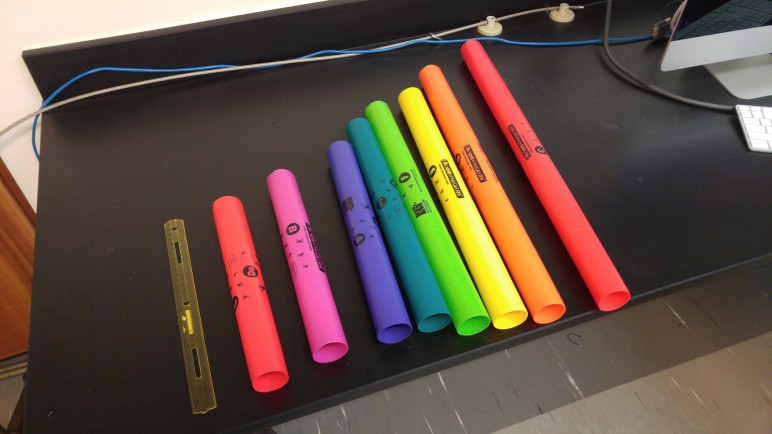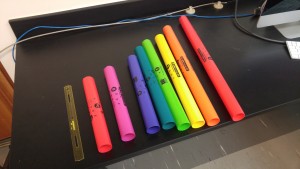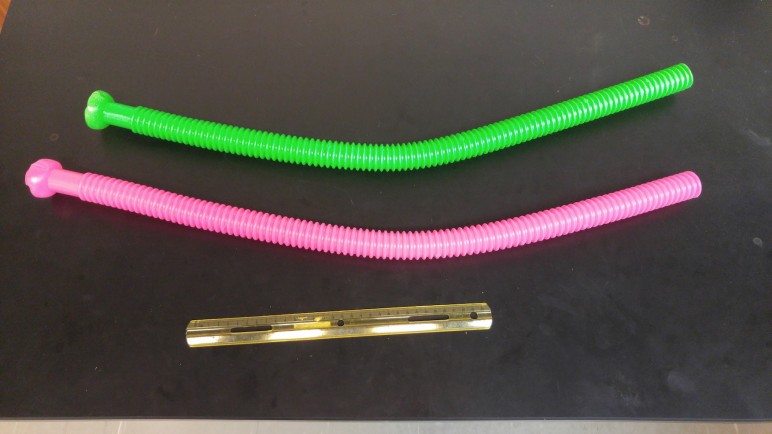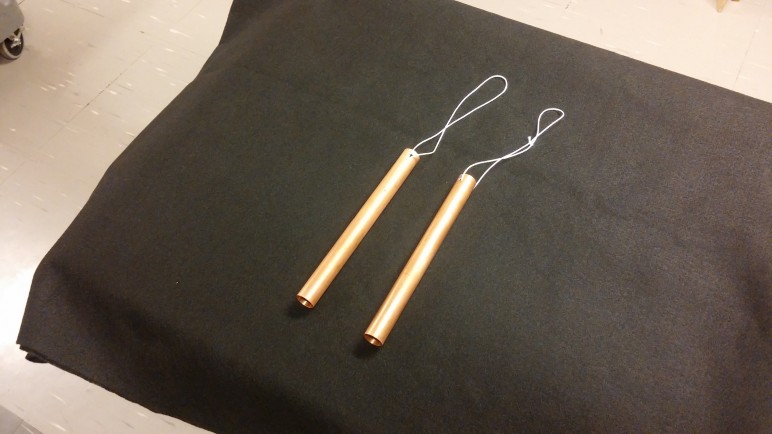- Length of each tube determines tube’s resonance pitch. The longer the tube the lower the pitch. Tone produced by whacking a tube reveals its note of resonance. Resonance pitch can be changed by attaching the plastic end-cap.
- For additional demo ideas and see: boomwhackers
- Located in L02, section C2.





